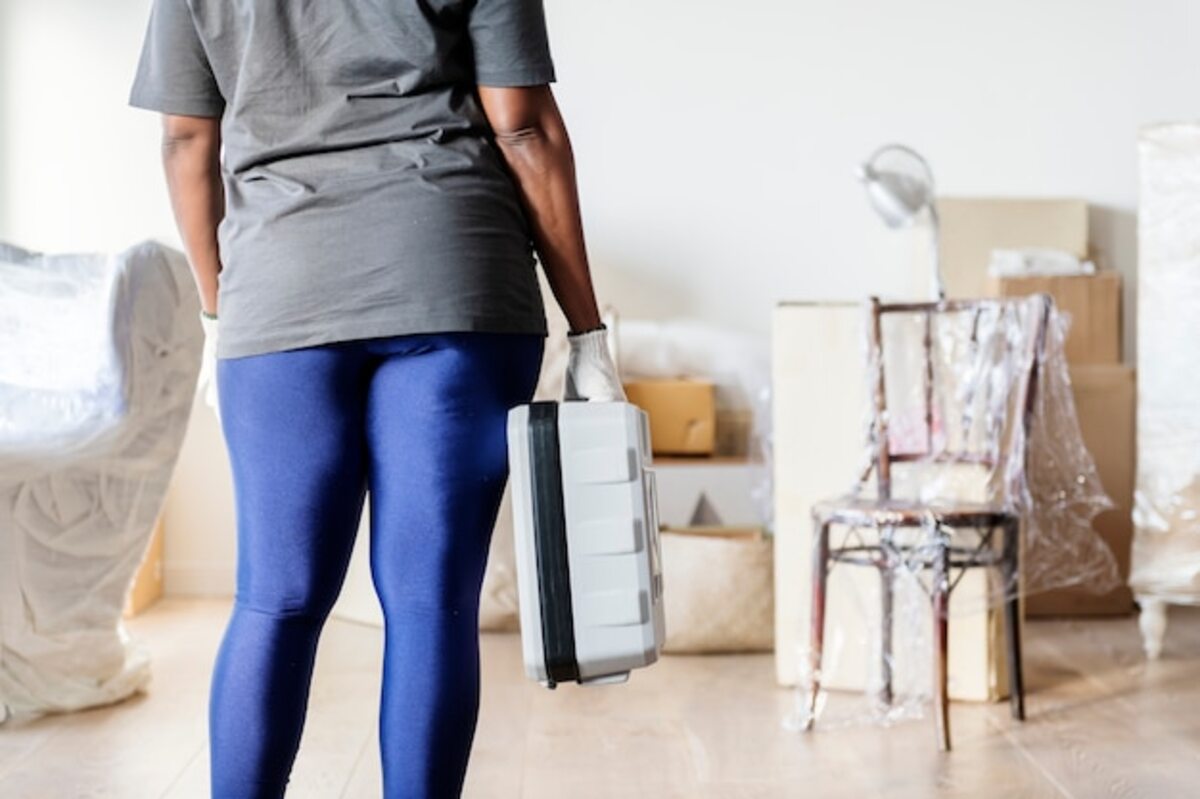Strategies to Minimize Clutter in Your Move

Minimizing clutter during a move is key to making this process much more manageable and less stressful. In this article, we will share effective strategies that will help you stay in control while packing and organizing your belongings. From creating a checklist to practical tips for deciding what to take and what to leave behind, every step is essential for a successful move. Get ready to transform this experience into a journey to your new home, without chaos or confusion.
1. The importance of planning in advance
Advance planning is a fundamental pillar for achieving an organized and clutter-free move. By starting early, you can create a schedule that allows you to tackle each task systematically, avoiding the typical last-minute accumulation of items. A good starting point is to develop a detailed checklist that includes all the stages of the process: from selecting appropriate boxes to the moment you need to disconnect services in your current home. This roadmap not only helps you stay focused but also reduces stress by clarifying what remains to be done.
Additionally, planning ahead gives you the opportunity to evaluate and decide which belongings you really need to take with you to your new home. This is essential to minimize clutter; many times we accumulate unnecessary items that will only take up space in our new environment. By taking the necessary time to review your belongings and make donations or sales before the move, you can substantially simplify the process. Thus, upon arriving at your new place, you will have fewer items to organize and more clarity on how you want to distribute everything, which will contribute to a quicker and more efficient setup.
2. Create a personalized checklist for your move.
To carry out a move without chaos, creating a personalized checklist is one of the most effective strategies. Start by listing all the tasks you need to complete, from the initial preparation to unpacking in your new home. Include items such as gathering boxes and packing materials, scheduling moving services, and notifying providers about your change of address. By having everything written down, you can visualize the entire process and ensure you don't forget any important details. Remember that this checklist should be tailored to your specific needs; if you have pets or plants, be sure to include special care for them.
In addition to the general list, consider dividing your checklist into categories that help you organize better. You can group tasks by rooms or by types of items (such as clothes, kitchen utensils, or important documents). This segmentation will allow you to tackle each area with focus and minimize the overwhelming feeling that can arise when facing your entire house at once. Adding deadlines for each task is also key; this will help you maintain a steady pace during the process and prevent pending work from piling up in the days leading up to the move. With a well-structured checklist, it will be much easier for you to manage the clutter and ensure an efficient transition to your new home.
3. Get rid of excess: tips to declutter your belongings
Getting rid of excess is a crucial step in the moving process and can make the difference between a chaotic transition and an organized experience. Before you start packing, take time to evaluate each of your belongings. Ask yourself if you have really used an item in the past year or if it holds significant sentimental value. If the answer is no, consider donating, selling, or recycling it. This approach will not only help you reduce the number of things you need to move, but it will also allow you to free up emotional and mental space, laying the groundwork for a new beginning in your home.
An effective technique for decluttering your belongings is to implement the four-box method: label them as “keep,” “donate,” “sell,” and “throw away.” As you review each room, place items in the corresponding box. This strategy clearly visualizes your decisions and simplifies the organization process. Additionally, set realistic deadlines to carry out these tasks; this will help you avoid the temptation to keep unnecessary items due to procrastination. Remember that each item you decide to leave behind represents a step toward a lighter and more organized move.
4. Efficiently classify and label boxes.
One of the keys to an efficient move is the proper sorting and labeling of boxes. Before you start packing, it is advisable to group your belongings by categories: clothes, kitchen utensils, books, decorative items, among others. This will not only make the packing process easier but will also give you a clear view of what you own and where each item is located. By sorting your objects, you can easily decide what to take to your new home and what to donate or discard. Remember that less is more; by reducing the number of items you transport, you will make the process more streamlined.
Once you have grouped your belongings into categories, the next step is to clearly label each box. Use adhesive labels or permanent markers to indicate the contents and the room they belong to. For example, instead of just writing "kitchen," specify "kitchen utensils" or "plates." This practice will save you time and effort when it comes time to unpack. Also consider a color-coding system to quickly identify the boxes according to their priority or fragility. Good visual organization will make your arrival at the new home much more orderly and less overwhelming.
5. Establish a designated area for essential items.
Establishing a designated area for essential items is one of the most effective strategies for maintaining order during a move. By defining a specific space in your home, whether it’s a box, a suitcase, or even a corner of the room, you can group together those items that you really need to have on hand in your new home. This can include important documents, personal hygiene items, basic clothing, and any other objects you consider essential for the first few days after the move. This way, you avoid the frustration of searching through stacked boxes when you arrive at your new place.
Assigning a specific area for your essential items not only helps you organize better during the moving process, but it also reduces the risk of losing important things in the chaos of packing and transport. Make sure to clearly label this area or container as "Essentials" so that everyone involved understands which items should be handled with care and kept accessible. This practice not only simplifies the first days in your new home by having everything you need within reach, but it also allows you to start enjoying the space without wasting time searching for what you need among disorganized boxes.
6. Involve the whole family in the process.
Involving the whole family in the moving process not only lightens the physical load but also transforms this experience into a joint and meaningful activity. Assigning specific tasks to each member allows everyone to feel part of the change, which can reduce the stress and anxiety associated with leaving a home behind. For example, children can take care of packing their own toys and books, while adults handle the common areas. By encouraging collaboration, a more harmonious and motivating environment is created.
In addition to distributing tasks, it is important to maintain open communication about progress and expectations throughout the process. Holding brief meetings to review what has been accomplished and what is still to be done helps everyone stay aligned. It can also be beneficial to establish break times where each member can share their feelings about the move, as well as reminisce about the previous home. This approach not only facilitates the organization of the physical space but also strengthens family bonds as they face this new chapter in their lives together.
7. Organize a garage sale or donate what you don't need.
One of the best ways to reduce clutter during a move is to organize a garage sale or donate what you no longer need. Often, we accumulate items that we have stopped using, and selling them will not only help you get rid of them but can also generate a little extra income for your moving expenses. Additionally, by allowing others to acquire your well-maintained items, you contribute to sustainability and community well-being. Plan your sale in advance: choose an appropriate day, promote the event on social media, and make sure everything is ready to showcase your belongings in their best condition.
If you prefer not to deal with the logistics of a sale, consider donating to local organizations. Many foundations accept clothing, furniture, and other household items that can be very helpful to those in need. This option not only simplifies the process by avoiding the need to set prices or negotiate with potential buyers but also gives you the satisfaction of knowing that you are helping others. Before donating, make sure to review the specific policies and requirements of each organization to maximize your positive impact and make the process easier for both you and them.
8. Take advantage of useful technology and applications for moving.
Leveraging technology and useful applications can be a great ally in minimizing clutter during your move. There are various apps specifically designed to assist in this process, from organizational tools that allow you to maintain a digital inventory of your belongings to planning platforms that facilitate scheduling the move and managing tasks. By using these technologies, you can create a detailed list of items to pack, set deadlines, and remember which items have already been moved, significantly reducing the possibility of forgetting something important or doing double work. Additionally, many apps offer features like QR code scanning or photography to label boxes and furniture, allowing you to easily identify their contents without needing to open them. You can also find resources that connect you with professional moving services or individuals offering help in your area. By integrating these technological tools into your process, you not only optimize the time and effort invested in the move but also maintain control over your belongings, ensuring that each item arrives at its destination without unnecessary complications.
Finally, consider using online platforms where you can share your experience or seek advice from others who have recently gone through a move. Digital communities are an excellent way to get recommendations on how to better organize yourself and which apps have proven most effective for other users. This way, you can further customize your moving strategy and ensure that every detail is under control as you move towards your new home.
9. Post-move tips to maintain order in your new home
Once you have settled into your new home, it is crucial to maintain order to enjoy a cozy and functional environment. To achieve this, start by establishing an organization system from day one. Assign a specific place for each item and ensure that all household members are aware of this system. Use boxes, baskets, or shelves to group similar items and make them easily accessible. Additionally, do not hesitate to label the containers; this not only speeds up the search for things but also prevents clutter from accumulating in common areas.
Another valuable tip is to implement a daily tidying routine. Spend a few minutes at the end of each day to pick up any out-of-place items and ensure that everything is in its place. This habit will help you prevent clutter from accumulating and keep your home in optimal condition. Also, consider doing regular reviews of your belongings; regularly get rid of what you no longer need or use. By following these simple post-move guidelines, you will be able to fully enjoy your new space without falling into the chaos of clutter.



